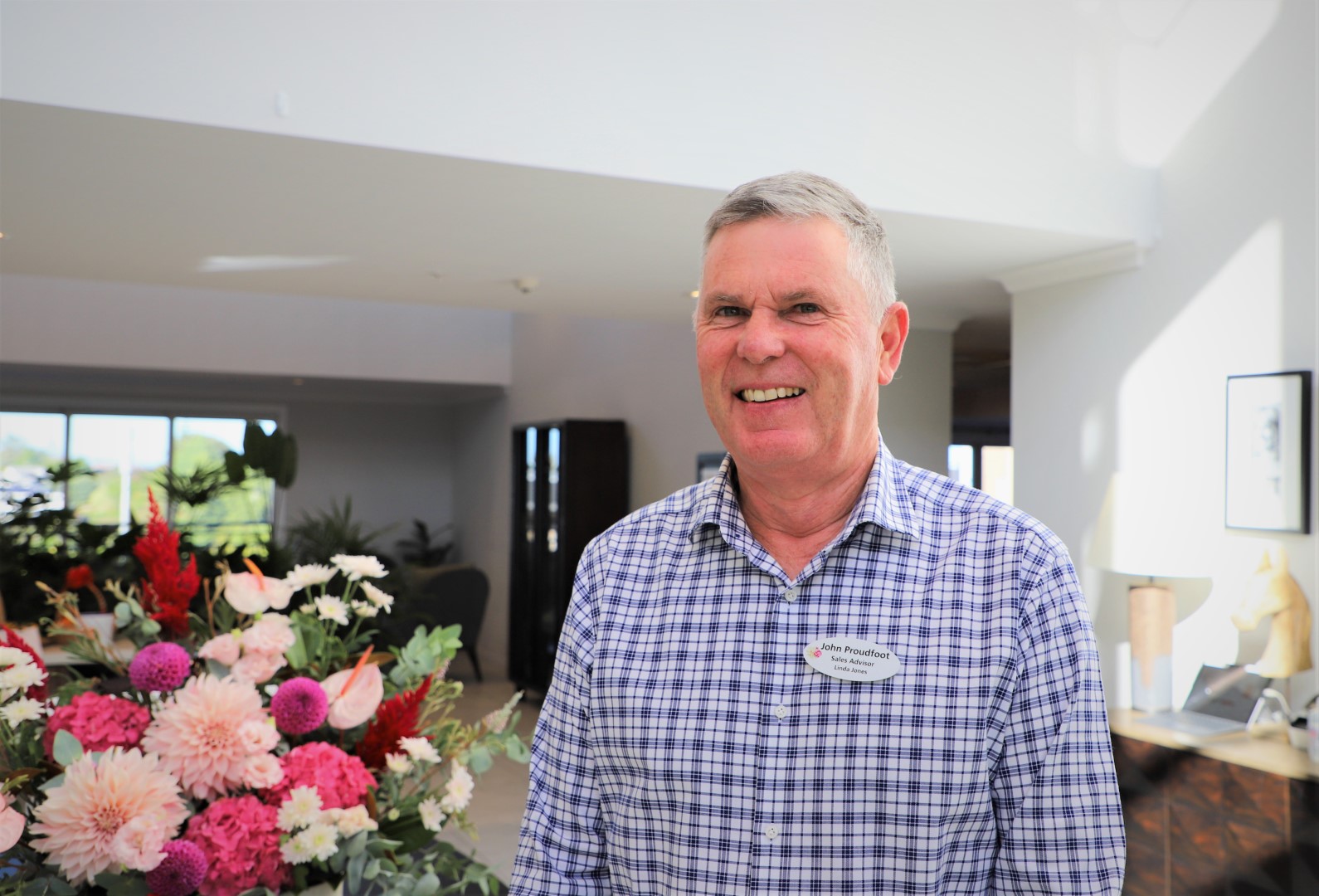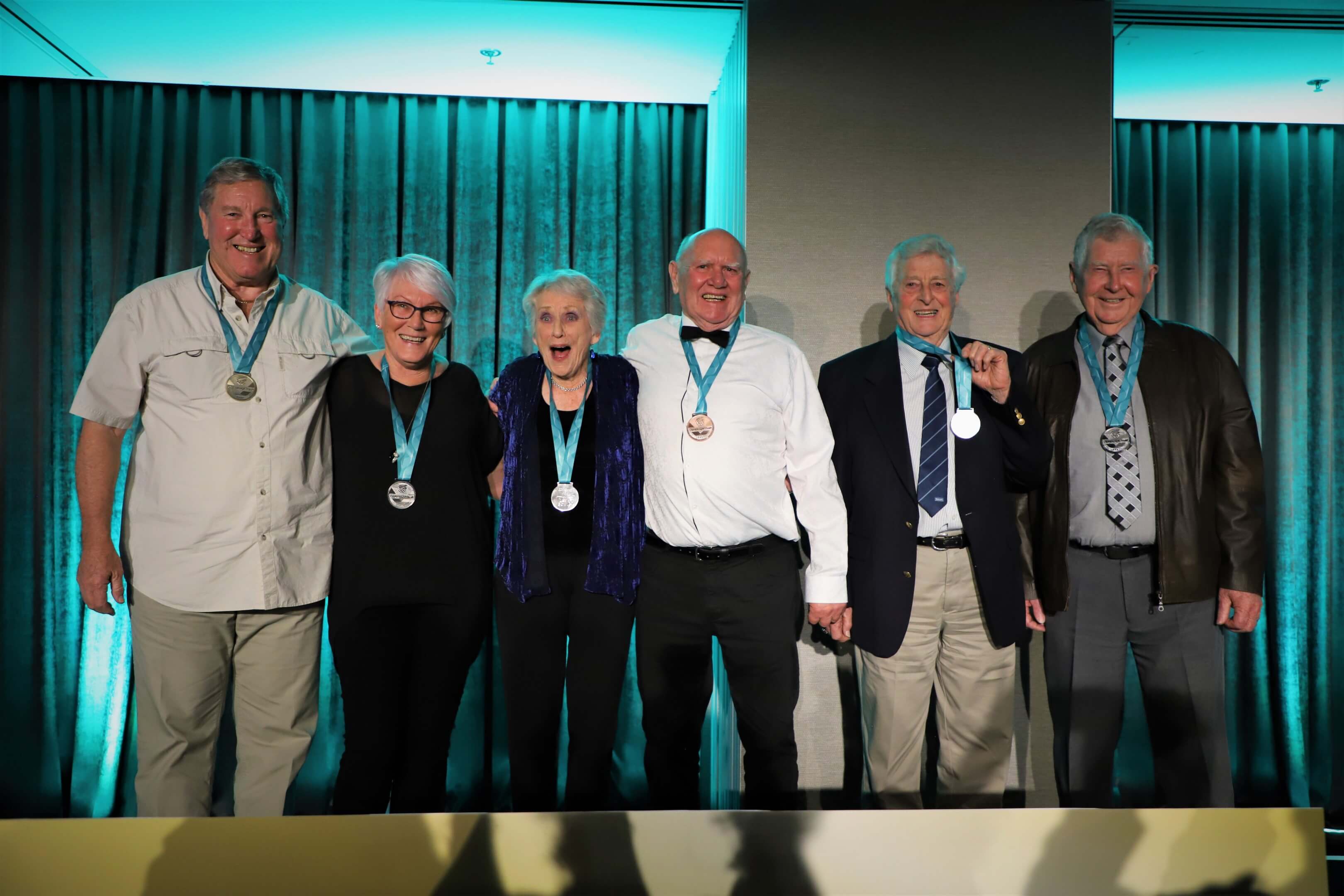Ryman’s oldest NZ resident turns 106!
Ryman’s oldest NZ resident turns 106!
.jpg?width=1620&height=1080&name=076A9528%20(Large).jpg)
When the 'remarkable' James Easton was assessed by doctors after WW2, he was told that the ravages to his body from being held prisoner for three and a half years would likely reduce his life expectancy by at least a decade.
Those ravages were considerable, ranging from constant bouts of malaria and dysentery, parasite infestation, the starvation and malnourishment that left his normally 1.88m, 80kg frame 30kg lighter, and working long hours of hard labour on Burma's ‘Death Railway’ regardless of how sick he was.
Yesterday, as he celebrated his 106th birthday at the resthome at Grace Joel Retirement Village, Jim’s incredible longevity and survival against the odds was again the topic of conversation amongst his loyal group of friends, who bestowed him with gifts including a new set of pyjamas, a blast of the bagpipes and then shared his favourite birthday treat - chocolate cake.
They are friends, or the children of friends he worked with on showgrounds around New Zealand since 1948 and have gathered to celebrate with him for the last 20 years, since he outlived his wife Maureen and then his only daughter Vikki.
.jpg?width=1620&height=1080&name=076A9533%20(Large).jpg)
Jim with his daughter's best friend Lyn, right, and his 'showies', friends from the showgrounds where he worked for more than 60 years.
This year, there are a couple more titles to add to the milestones Jim has smashed of late.
He is Ryman’s oldest resident in New Zealand, certainly one of the oldest people in the country and he can now boast being the first New Zealander to receive a card from two monarchs – one from the Queen when he turned 100 and now one from King Charles for his 106th – Jim’s verdict: it was nicer than the Queen’s!
He’s also a semi-supercentenarian, according to this year’s Ryman Prize winner Professor Perminder Sachdev, who has overseen one of the world’s largest studies of centenarians and was recognised for his years of research by Prime Minister Jacinda Ardern last week.
People who reach 110 are known as supercentenarians, and from 105 onwards they are semi-supercentenarians.
Professor Sachdev met with Jim a few days before his birthday to question him on all aspects of his life to find out what ingredients went into his recipe for longevity.
After nearly an hour of talking about his eating and exercise habits, his family history and education, and life experiences, Professor Sachdev admitted Jim was indeed ‘remarkable’ and an ‘exception’ to many of the trends that the study had identified.
“Well, you're remarkable. Congratulations!," Professor Sachdev told Jim.
"Often with centenarians other members of the family have lived for a long time, but there is no longevity in his life, so it must be that genetic component, the host of genes that have come together - or the luck of the draw!,” said the Professor.
“Jim truly is an exception!”
.jpg?width=1620&height=1080&name=076A9551%20(Large).jpg)
In typical Jim fashion, he had thrown out the card he received from the Queen, but fortunately he liked the one he received from the King better!
Jim was born in Kirkintilloch, Scotland, in 1916, moving to Canada with his family at the age of three, before they settled in the Hunter Valley in Australia when he was 11.
He left school at 14 to go ‘hoboing’, jumping on trains and travelling around the country with his mate, doing odd jobs for food. Later, he turned to street photography, where he often took photos of military men before they headed overseas to fight in the war.
At the relatively mature age of 23, Jim joined the Australian Army with the aim of doing his bit for the war effort too, but it wasn’t long before he was captured by the Japanese and went on to spend the next three and a half years as a prisoner of war.
Professor Sachdev said Jim’s old age achievement was unusual in several ways. Generally speaking, taller people didn’t live as long as shorter people, women lived longer than men, and most centenarians had a higher level of education.
However, balancing that out was Jim’s aversion to smoking and drinking, his fairly active working life that kept him fit, and his voracious appetite for keeping up with current affairs and reading, with him still reading at least two books a week.
The war experience, while shocking in the extreme, is likely responsible for his impressive level of resilience and tolerance to pain, something his friend Lyn Hastie, who has known him for 55 years, can testify to.
“I took him for a root canal and he had no injection!” she said.
“The minute he thinks something is wrong, he goes into survival mode. I think that’s part of it. That and the fact he is extremely stubborn!”
Professor Sachdev was impressed that even the desperate times of war hadn’t driven Jim to indulge in the cigarettes and alcohol that many of his mates enjoyed.
“I never smoked a cigarette and I never drank alcohol,” he told the Professor.
“Where I grew up you’d see all the miners finishing work at 3pm and going into the pub.
%20(Large).jpg?width=1620&height=1080&name=IMG_6090%20(1)%20(Large).jpg)
Ryman Prize winner Professor Perminder Sachdev enjoyed spending time with Jim and hearing his incredible life story.
Then you’d see them come out a few hours later and they’d be punching the shit out of each other.
“I thought as a child I’m never going to go in one of those places.”
This mental fortitude stood him in good stead throughout his life, along with his sharp sense of humour, and evident underlying optimism.
When Professor Sachdev asked Jim how he felt about becoming a centenarian, Jim replied: “Surprised!”
“Is it a good feeling?” the Professor asked.
“Yes,” said Jim. “I didn’t expect to live through the war, not eating and the ailments I had, even a touch of cholera – they said I was a carrier.
“I reckon if I hadn’t gone to war and I’d stayed at home I’d reach 200!”
While he may not make 200, his mates joked at his birthday lunch that if he was still going strong in a couple of years they’d be taking him back out on the road again, this time as an exhibit!
by Maryvonne Gray | Dec 13, 2022
Subscribe to our blog newsletter
You May Also Like
These Related Stories

Linda Jones is Ryman’s fittest village for 2023!

Ryman’s definitely good enough for John’s mum


